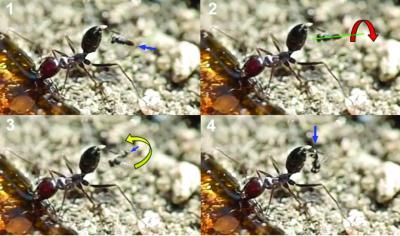Flight attacks of small parasitoid wasps (no larger than 2.0 mm in size) on ant workers have been filmed by José María Gómez Durán from Madrid. The four species of wasps show amazing adaptations and enormous differences in the tactics they use. Two of the four filmed species are new to science and are described by Dr Kees van Achterberg from NCB Naturalis Leiden. The study was published in the open access journal ZooKeys.
Ants are a very dominant group in nature and well-equipped to defend themselves. Only a few small parasitoids manage to break through their defence, thanks to very different and amazing adaptations. The four filmed species belong to four different genera and two different families of wasps (Braconidae and Ichneumonidae). The eggs of the Braconidae develop inside adult ants. The eggs of the Ichneumonidae, however, develop in the larvae of ants. How the newly developed young wasps manage to survive inside the ant nest is still unknown. One of the possible explanations is that dead ants may be deposited outside the entrance of the ant nest, thus giving the young wasps a chance to emerge, avoiding a lethal attack on themselves.

A female parasitoid wasp of Kollasmosoma sentum new species attacks an ant worker of Cataglyphis ibericus; all in 0.05 seconds.
(Photo Credit: José María Gómez Durán)

Females of the parasitoid wasp Kollasmosoma sentum oviposit in workers of the ant Cataglyphis ibericus.
(Photo Credit: José María Gómez Durán)

Females of the parasitoid wasp Neoneurus vesculus oviposit in workers of the ant Formica cunicularia.
(Photo Credit: José María Gómez Durán)
Source: Pensoft Publishers